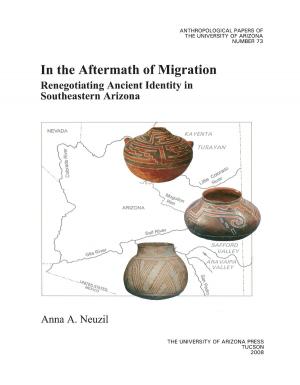At the Border of Empires
The Tohono O'odham, Gender, and Assimilation, 1880-1934
Nonfiction, History, Americas, Native American, United States| Author: | Andrae M. Marak, Laura Tuennerman | ISBN: | 9780816535958 |
| Publisher: | University of Arizona Press | Publication: | October 15, 2016 |
| Imprint: | University of Arizona Press | Language: | English |
| Author: | Andrae M. Marak, Laura Tuennerman |
| ISBN: | 9780816535958 |
| Publisher: | University of Arizona Press |
| Publication: | October 15, 2016 |
| Imprint: | University of Arizona Press |
| Language: | English |
The story of the Tohono O’odham peoples offers an important account of assimilation. Bifurcated by a border demarcating Mexico and the United States that was imposed on them after the Gadsden Purchase in 1853, the Tohono O’odham lived at the edge of two empires. Although they were often invisible to the majority cultures of the region, they attracted the attention of reformers and government officials in the United States, who were determined to “assimilate” native peoples into “American society.” By focusing on gender norms and ideals in the assimilation of the Tohono O’odham, At the Border of Empires provides a lens for looking at both Native American history and broader societal ideas about femininity, masculinity, and empire around the turn of the twentieth century.
Beginning in the 1880s, the US government implemented programs to eliminate “vice” among the Tohono O’odham and to encourage the morals of the majority culture as the basis of a process of “Americanization.” During the next fifty years, tribal norms interacted with—sometimes conflicting with and sometimes reinforcing—those of the larger society in ways that significantly shaped both government policy and tribal experience. This book examines the mediation between cultures, the officials who sometimes developed policies based on personal beliefs and gender biases, and the native people whose lives were impacted as a result. These issues are brought into useful relief by comparing the experiences of the Tohono O’odham on two sides of a border that was, from a native perspective, totally arbitrary.
The story of the Tohono O’odham peoples offers an important account of assimilation. Bifurcated by a border demarcating Mexico and the United States that was imposed on them after the Gadsden Purchase in 1853, the Tohono O’odham lived at the edge of two empires. Although they were often invisible to the majority cultures of the region, they attracted the attention of reformers and government officials in the United States, who were determined to “assimilate” native peoples into “American society.” By focusing on gender norms and ideals in the assimilation of the Tohono O’odham, At the Border of Empires provides a lens for looking at both Native American history and broader societal ideas about femininity, masculinity, and empire around the turn of the twentieth century.
Beginning in the 1880s, the US government implemented programs to eliminate “vice” among the Tohono O’odham and to encourage the morals of the majority culture as the basis of a process of “Americanization.” During the next fifty years, tribal norms interacted with—sometimes conflicting with and sometimes reinforcing—those of the larger society in ways that significantly shaped both government policy and tribal experience. This book examines the mediation between cultures, the officials who sometimes developed policies based on personal beliefs and gender biases, and the native people whose lives were impacted as a result. These issues are brought into useful relief by comparing the experiences of the Tohono O’odham on two sides of a border that was, from a native perspective, totally arbitrary.















